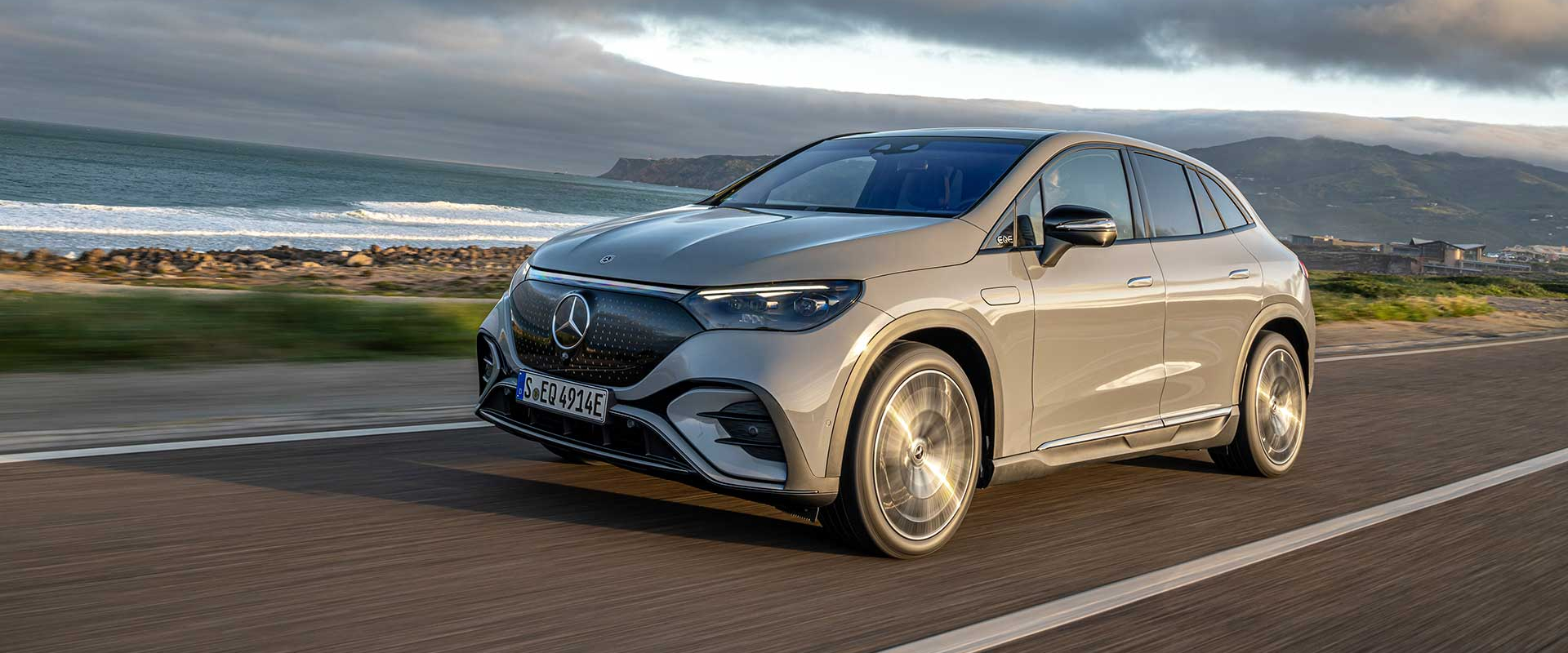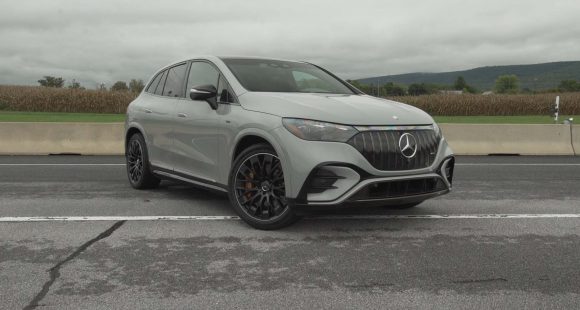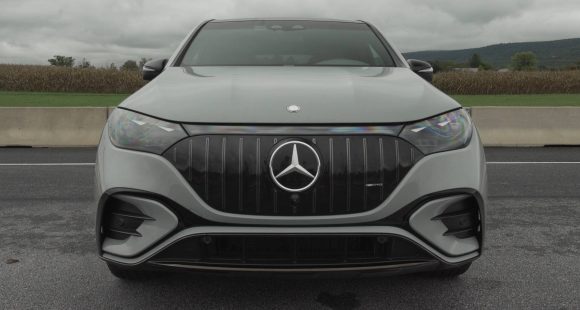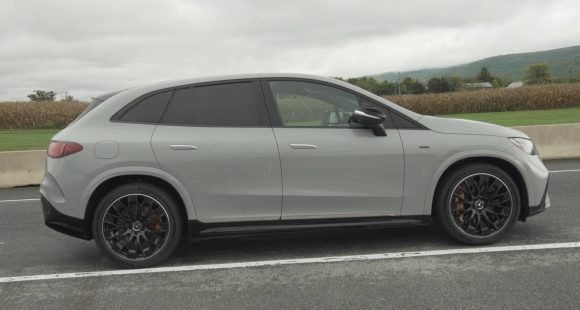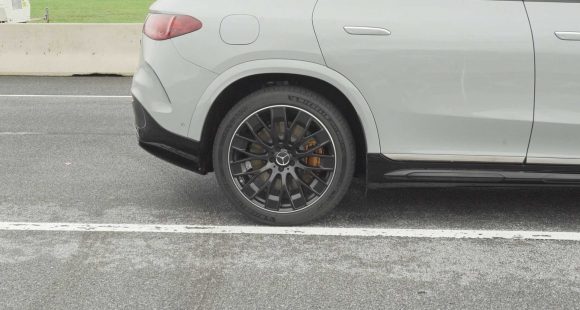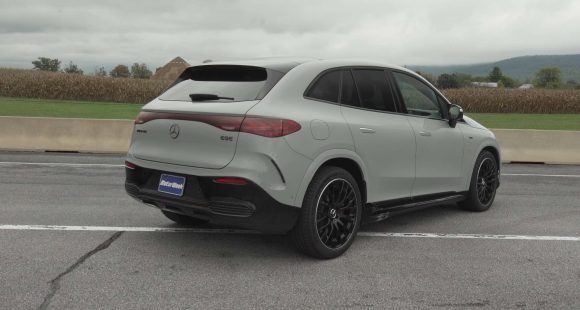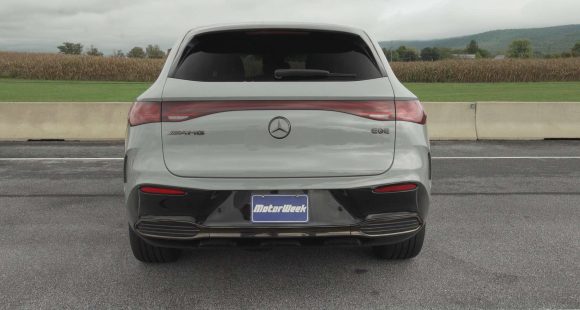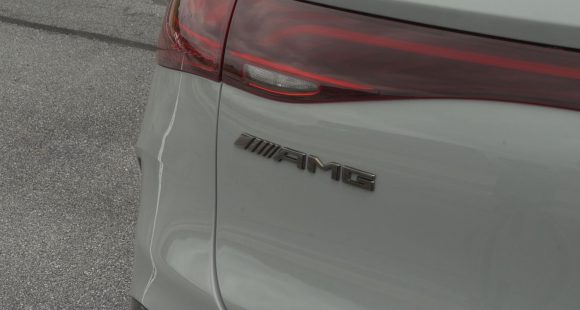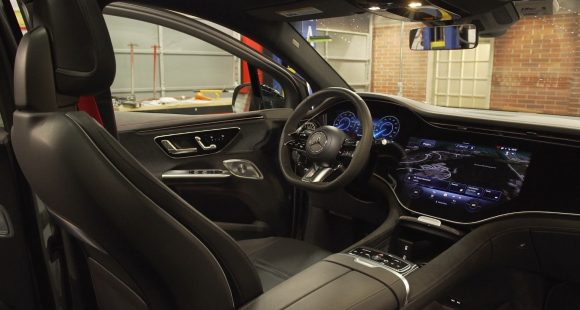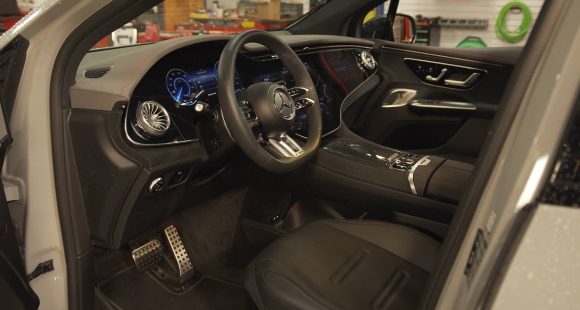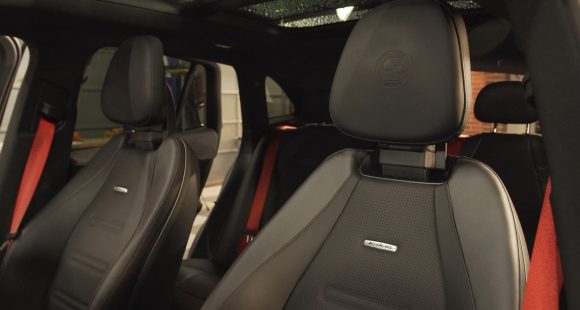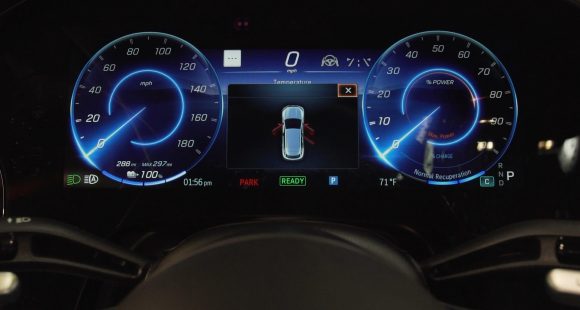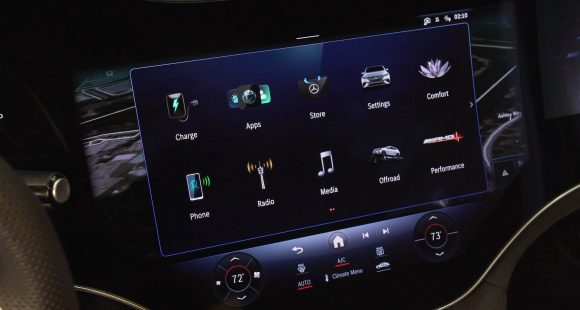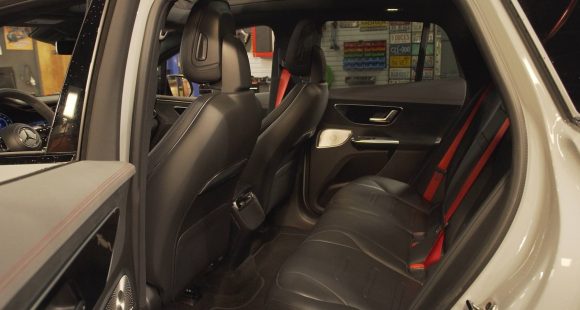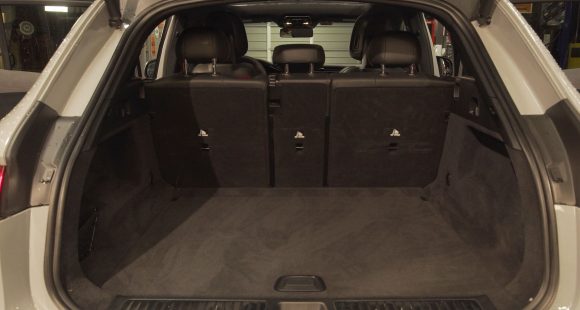2010 Ford Transit Connect
Ford Motor Company is the only U.S. automaker to avoid bankruptcy. But they’re by no means assured of long term success. Part of their plan to prosper hinges on bringing their best overseas vehicles here. First to arrive is the Transit Connect van. Since 2003, some 600,000 Transit Connects have been sold in 58 countries. Its compact size appeals to small businesses. But will it connect with American entrepreneurs? Well, let’s load up and find out.
The 2010 Ford Transit Connect does indeed look narrow and quirky by American work van standards. But this Turkish-made front-wheel drive hauler is clearly a Ford truck- from the sharp-edged headlight stacks and understated three-bar grille to the F-150-style stepped front windows and side mirrors.
Even in top XLT trim, work-grey fender flares surround no-nonsense 15-inch steel wheels with plastic lug-nut covers. But, while styling won’t raise any pulses, the Transit Connect’s form follows its function to a ‘T.’
Indeed, the most striking feature is its short but tall proportions. With a wheelbase of 114.6 inches, it’s only 180.6 inches long overall. That’s three feet shorter than Ford’s E-Series full size van. But at 79.3 inches tall, it’s more than 10 inches taller than Ford’s last minivan, the Freestar.
That makes it ideal for small businesses that carry bulky items, like the tasty creations from our friends at Baltimore’s Charm City Cakes.
MARY ALICE YESKEY: We got the Ford Transit about six months ago, and the whole experience was really cool for us because it was truly custom made from start to finish. We couldn’t have designed a better vehicle to transport cakes. It’s awesome.
 There are two body styles. The base cargo Van has no glass aft of the B-pillars, but windows can be added in the twin sliding side doors, the rear swing doors, or both. Optional are 255-degree split rear cargo doors with rubber bump stops.
There are two body styles. The base cargo Van has no glass aft of the B-pillars, but windows can be added in the twin sliding side doors, the rear swing doors, or both. Optional are 255-degree split rear cargo doors with rubber bump stops.
In passenger Wagon form, windows are standard and seating is available for two, four, or five.
There’s an impressive 78.1 cubic feet of cargo space behind that second row. But fold it up, or don’t tick the option box, and that figure swells to 135.3 cubic feet. Payload capacity is a more than adequate 1,600 pounds.
The driver’s space is also work-focused: bland but roomy. There are echoes of Ford’s first-gen Focus here, with which the Transit Connect shares platform components.
Our XLT came with an in-dash computer featuring navigation, Internet access, Bluetooth, and wireless keyboard; perfect for staying in touch with the office.  And above the windshield there is a useful storage shelf. Given the van’s limited rear visibility, the reverse-sensing system is another good choice.
And above the windshield there is a useful storage shelf. Given the van’s limited rear visibility, the reverse-sensing system is another good choice.
While most Transit Connects abroad use diesel power, we’ll have to make do with a gasoline 2.0-liter I4 with 136 horsepower and 128 pound-feet of torque. Our only transmission is a four-speed automatic. Still, Government Fuel Economy ratings are fine at 22 city, 25 highway. We managed 23.6 miles per regular gallon in mixed driving.
But the economy comes with a price. The Transit Connect strolls to 60 mph in 12.1 seconds, and covers the quarter-mile in 18.7 seconds at just 75 miles per hour. So, plan your merging and passing well in advance. On the other hand, 60 to 0 stops averaged an acceptable 129 feet, with a solid response.
Our van had optional Roll Stability Control. So, even with a simple torsion beam rear suspension, our Transit Connect felt light on its feet and never top-heavy through the slalom. Add in a tight 39-foot curb-to-curb turning diameter and the result is an easy-to-maneuver city hauler.
The base Transit Connect van starts at $21,475. The wagon begins at $21,830. Our well-equipped wagon ticketed for just under 25 grand. An electric-powered version will be coming to the States in 2010.
The 2010 Ford Transit Connect impressed us with its cargo space, efficiency, city-smart agility, and very useful, very cool job-site gadgets. And if the Transit Connect is a true indication of how other off-shore Fords will take to America, the company’s fortunes are bound to keep improving.
Specifications
- Engine: 2.0-Liter I4
- Horsepower: 136
- Torque: 128 Lb Feet
- 0-60 MPH: 12.1 Seconds
- 1/4 Mile: 18.7 Seconds @ 75 MPH
- 60-0 MPH: 129 Feet
- EPA: 22 MPG City/ 25 MPG Highway
- Mixed Loop: 23.6 MPG
2024 Mercedes-AMG EQE
AMG EQE SUV OMG TSNF YOLO LOL
We all know that cranking up the performance in a battery-electric vehicle is a much different and much simpler process than the methods used over the last 100 years of internal-combustion powertrains. So, let’s see how AMG has adapted to this brave and very fast new world with the Mercedes-AMG EQE SUV.
This 2024 Mercedes-AMG EQE is the first all-electric performance SUV from the motoring masterminds at AMG. Starting with the same EQ platform that underpins the brand’s S- and E-class based all-electric sedans and utilities, AMG replaces the EQE 500 4MATIC SUV’s motors with AMG specific units both up front and in back. These specially built motors have unique windings, adapted inverters, and upgraded cooling; all so more current can flow, producing a new total of 617 horsepower and 701 lb-ft of torque.
While the midsize EQE SUV doesn’t feel overly large to drive, it does have an incredibly solid, almost tank-like presence to it, weighing in at just shy of 6,000 lbs. Yet, standard rear-axle steering helps it behave quite nimbly, and it accelerates like a vehicle half that weight, pushing you back in the seat with authority whenever you go all in on the accelerator pedal. An extended period of Mid-Atlantic rain kept us from getting track numbers, but Mercedes claims 0-60 in 3.4 seconds. We’d say that’s conservative given Race Start with Boost Function unlocks an additional 60 horsepower.
Likewise, as in previous Mercedes EVs we’ve tested, it overachieved when it came to battery range as well. With the official rating of the AMG EQE SUV at 235 miles, we plotted a 200-mile road trip, and still had 21% of battery remaining at the end of it, putting our range estimate closer to 254 miles. Max DC fast charging for the 90.6-kWh battery, which is the same battery used in the EQE 500, is perhaps not as high-performance as the rest of the vehicle. At 170 kW, it takes about 15 minutes to add 100 miles of range. Though when driving, the regen braking setup can feed power back at a rate of 260 kW. Our tester’s optional ceramic brakes were plenty strong, if a little touchy around town. There’s also active braking that likes to initiate regen before you actually touch the pedal when you’re coming up on another vehicle or approaching an intersection.
Nobody does interiors like Mercedes-Benz, and we’re not just talking about the luxurious quality of the leather and carbon fiber materials. There’s the wow factor of the dash-wide Hyperscreen, and cool aspects too, such as the turbine-like air vents. That’s before you even get to looking around at the AMG specifics like the Performance Steering Wheel, Dynamic Select Drive Modes, and even the unique AMG Sound Experience coming through the Dolby Atmos surround sound system with speakers seemingly everywhere.
It’s not all glitz and glamour though, as there are multiple thoughtful storage locations throughout the cabin, and good cargo hauling abilities too. The 18.4 cu-ft of space in back and max capacity of 59.2 cu-ft with rear seatbacks folded might just be the ticket to convincing your significant other into letting you make this oh so sensible purchase. Rear seat passengers of this five-seater will appreciate their own luxurious space, with comfortable seating, adequate leg and headroom, and multiple charging ports.
There’s nothing that screams high-performance on the outside of this EQE SUV, as AMG details are mostly subtle, though stacking both of the available AMG Night Packages adds lots of gloss black trim and dark chrome accents. There are three different 21-inch wheel patterns to choose from, as well as available 22s.
Most of the AMG goodness lies deep within, like performance-tuned fully variable 4MATIC+ all-wheel drive that adjusts torque distribution 160 times per second based on drive mode and chassis sensor info. Likewise, AMG Ride Control+ air suspension with adaptive damping and active roll stabilization is constantly monitoring road and driving conditions, along with driver input, adjusting the suspension accordingly, and delivering vastly different driving experiences spread across multiple drive settings from Comfort to Sport+.
Using 46 kWh of electricity per 100 miles, the AMG EQE SUV earns a fair efficiency rating. Pricing starts at $110,750; certainly not out of line for any high-performance vehicle these days, much less one with a Mercedes Star plus an AMG badge.
You could argue that when Mercedes-Benz made the EQ leap into full battery-electric vehicles, they prioritized precision over passion. Well, there’s a healthy dose of both here in this 2024 Mercedes-AMG EQE SUV. Now, we may just be a little lightheaded from experiencing all of the performance that’s packed into this midsize utility, but this is easily our favorite Mercedes EV we’ve driven yet; and that kind of makes sense considering AMG had a big hand in creating it.
Specifications
As Tested
- Motor Setup: Dual Motor
- Battery Size: 90.6-kWh
- Horsepower: 617
- Torque: 701 lb-ft
- EPA Range: 235 miles
- MW Test Loop: ~254 miles
- Peak Charging Rate: 170-kW







